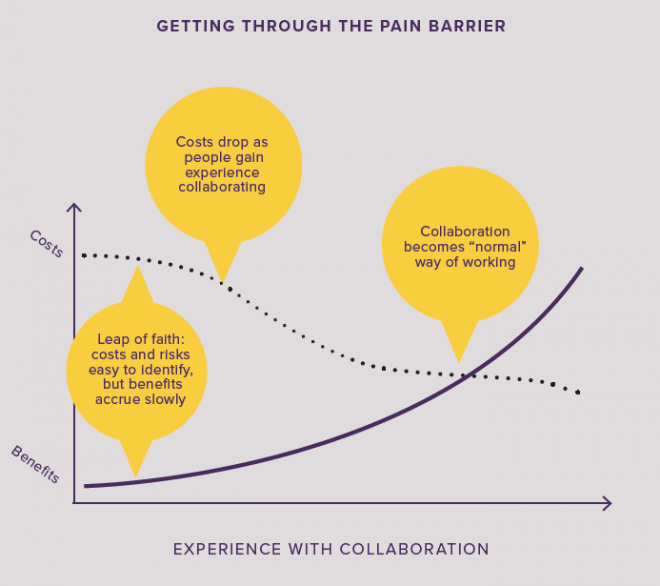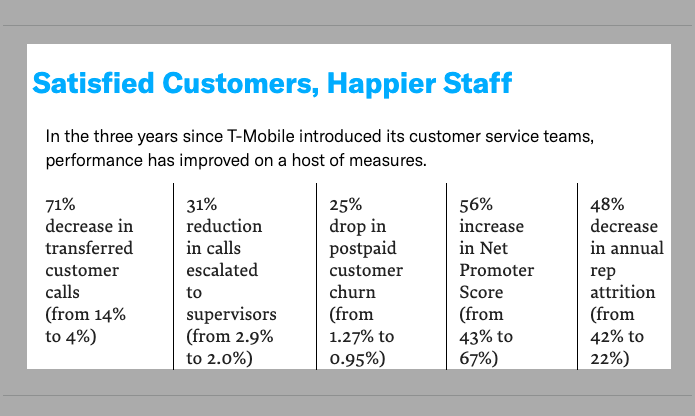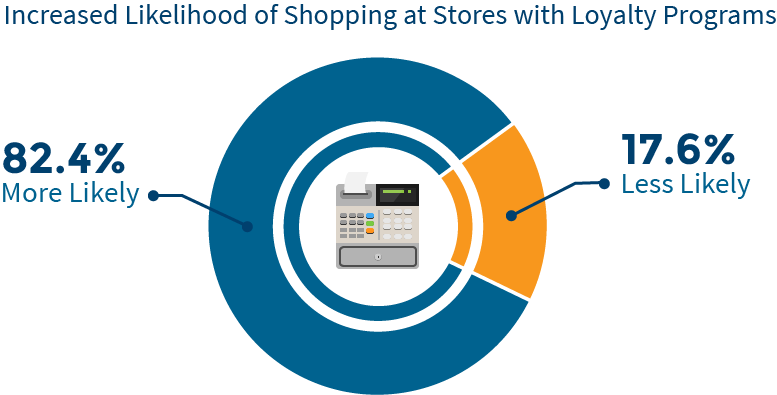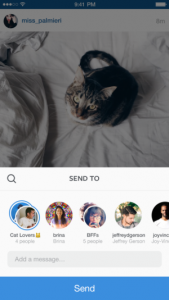Team collaboration serves customers holistically. So customers become loyal. Businesses that get it will enjoy loyal customers while others struggle.
In one study, 86 percent of business executives said that lack of collaboration or poor communication causes workplace failure.
Employees agree more. In that study, 97 percent of employees say that lack of team alignment impacts goals and projects negatively.
It doesn’t matter if you aim to win more loyal customers or double your revenue. If your team has weak collaboration and alignment, you won’t reach that goal.
But you might wonder, how does team collaboration translate into customer loyalty?
The collaboration magic your business is missing out on (and what to do)
Loyal customers mean that you’re less likely to be overly impacted by sudden changes in the marketplace:
- A pandemic,
- New competitors,
- Improved, old competitors,
- Natural disasters,
- An error in your marketing, product, service, or anything else.
Having loyal customers is like having a safety net for unexpected events. But it’s also like having a magic wand to grow your business exponentially.
Albeit, customers won’t just walk in and become loyal.
Loyalty is earned.
So who is going to do the work to make your customers loyal?
Yes, your team—team collaboration builds customer loyalty. But how’s that in practice?
Customer loyalty is the goal

Getting buyers to stick around is tough. Businesses lose half their customer base every five years. However, when you boost retention, the result is magical. Customers that stick around for the long term
- Are five times more likely to buy more products,
- Can be served in less time,
- Are less price-sensitive,
- Have 400 percent more likelihood of referring new customers,
- Have no acquisition or setup cost,
- Are 700 percent more likely to try your new products,
- They’d trust your product or service recommendations.
Some industries report doubling their profits by lowering churn by as little as five percentage points. What’s more? Customer acquisition is expensive and challenging,
- Acquiring new customers costs six times as much as keeping old ones,
- Loyal customers spend 500 percent more money on your business,
- The success rate of selling to new customers is five to 20 percent, while the rate for loyal customers stands at over 60 percent,
- New customers are 500 percent less likely to forgive an error.
I bet you’d appreciate having more customers who
- Recommend you,
- Buy from you,
- Engage with your brand, and
- Forgive your mistakes.
Yes, these types of customers are the bread and butter of running a successful business. But how do you attract them?
Set up a loyalty program and make your team collaboration work. Shoppers love loyalty programs. Having a loyalty program boosts your chances of gaining customers by more than 80 percent.
One way to achieve sustainable customer loyalty is through team collaboration.
Don’t miss an update!Have every post delivered directly to your inbox
Thanks for your interest in Chanty!
Team collaboration helps you score that goal
Team collaboration brings everyone together to focus on the customer’s needs. Researchers found that when product development specialists collaborate with other teams across their organization, revenue went up by 160 percent.
What’s responsible for this jump in revenue? Teams manage complexity better when they collaborate.
As businesses grow, costs grow—collaboration offers more rounded solutions to complex and annoying problems.
According to Dr. Heidi Gardner, a former professor at Harvard Business School,
“The more departments serving a customer, the longer that customer remains with the organization, even if the lead salesperson changes.”
Dr. Heider says that the probability of losing a customer because a key salesperson left the company falls from 72 percent to ten percent if more than one person serves the customer.
Collaborating reduces customer churn. What’s more? More robust and broader team collaboration has even more benefits:
- Lowers the cost of customer acquisition,
- Raises the retention rate of loyal customers,
- Turns more ordinary buyers to loyal customers,
- Lowers the cost of technology and investments,
- Improves the quality of customer service and experience.
So why are companies not collaborating enough already? It requires a learning experience and might feel expensive at first. Nevertheless, businesses that get past the tough beginnings reap the benefits forever.

3 tips to unlock customer loyalty with team collaboration
Team collaboration unlocks customer loyalty. But how do you apply it?
Gather and analyze customer feedback
Your team can’t collaborate in the dark. Collaborating teams need to know what customers want and how they want their solutions served.
Hence you want to gather your customer’s feedback on their experiences with your products or your competitors’. Tools like Survey Monkey, Typeform, or Google Forms can help you gather intelligence on what your customers think.
You can also use beta testing platforms to gather feedback about your app before launching it.
From your customers’ answers, you’d notice common themes and ideas. Make notes, and if something is unclear, reach out to your customers for clarifications.
Don’t make sweeping assumptions.
When collecting feedback from your audience, ask their permission for follow-up questions and calls. Getting their consent for a follow-up contact allows you to go beyond the survey and get an interview session.
Collect useful data
You should collect user data in more ways than surveys and interviews. A tool like Hotjar can help you collect information about how your users are navigating your site or using your app.
Technology such as chatbots can come in handy, too. The best chatbots are equipped with powerful tracking and analytics. They are able to monitor your website’s visitors behaviour, assign tags based on this data, and use it for future marketing efforts.
But data doesn’t have to be for customer-facing interactions alone. Gather data on internal communications and activities too:
- Know your collaboration bottlenecks,
- What’s working already, and
- Opportunities for better collaboration
These are all critical parts of preparing for your team’s collaboration. If your sales and customer service teams are already collaborating, model their successes. If your team members have never collaborated across your organization, train them.
Gather data to know where your team is at the moment, and also know how your customers are using your product and resolving issues. Look into your customer service and helpdesk data for useful insights.
Communicate effectively
Collaboration is about communication. It’s about sending clear messages, receiving replies, and responding to or acting on the information you have received.
Where there’s a communication breakdown, collaboration breaks. Team collaboration only leads to customer loyalty if team communication is strong.
So how do you strengthen team communication?
- Bring your team communication to a dedicated tool, like Chanty. Email is better for other things, not if your goal is efficient team collaboration.
- Remove communication bottlenecks between your company’s subordinates and their supervisors.
- Segment your team members by their expertise and strengths. You can take advantage of a good resource scheduling software solution to manage your team members in different tasks accordingly.
- Build a knowledge base for your customers and the team. Seventy percent of your customers would use a self-help service before they reach out to customer service.
You want to have the most capable persons resolve each part of a customer’s problem. To make that level of customer service excellence possible, you must remove any bottlenecks in information and communication flow.
The biggest drawback to effective communication is trust. Trust becomes a more significant issue as teams go remote. Deliberately foster an environment of trust among your team members.
T-Mobile used team collaboration to boost their net promoter score

T-Mobile had implemented its self-service system, which worked well in the beginning. Customers used the company’s self-service and only reached T-Mobile’s reps when they had difficult issues that self-service couldn’t solve.
For a network that serves more than 40 million people, the need for one-on-one calls that demanded expert help went up. Soon enough, customer reps couldn’t handle the volume of requests they were getting.
The company then devised a strategy that’s similar to what’s common in B2B. A small team of 47 highly-specialized team members would manage a group of customers’ accounts. They called this customer-centric model the Team of Experts (TEX) model.
A colocated TEX team in Austin could serve a dedicated group of 125,000 customers in Philadelphia.
Each team consists
- A team leader,
- Four dedicated coaches,
- Eight tech specialists to help with sophisticated software and hardware issues,
- A customer solutions expert to help spot trends and address persistent issues,
- One resource manager for workforce scheduling and management, and
- 32 reps
In-house TEX teams can get help from outsourced TEX teams when they need it.
Among other positive outcomes, this collaborative customer service approach led to a 56 percent uptick in T-Mobile’s net promoter score (NPS). In the years following, T-Mobile consistently ranked the top wireless provider for customer service by Nielsen and other CS rankings in North America.
Your turn: put team collaboration to work
You may not have the resources to galvanize a team of dedicated experts around your customer service. But you can still adapt the TEX model to your resources.
For example, you can have a team that works part-time to support customer service reps. Having people work part-time in roles that don’t need them involved always is effective for a small business or startup.
Regardless of your business size, you can use collaboration to keep your customers loyal. Poor customer service is the number one reason why customers churn. You can end that downward trend with the help of effective team collaboration.
Business & Finance Articles on Business 2 Community
(47)









